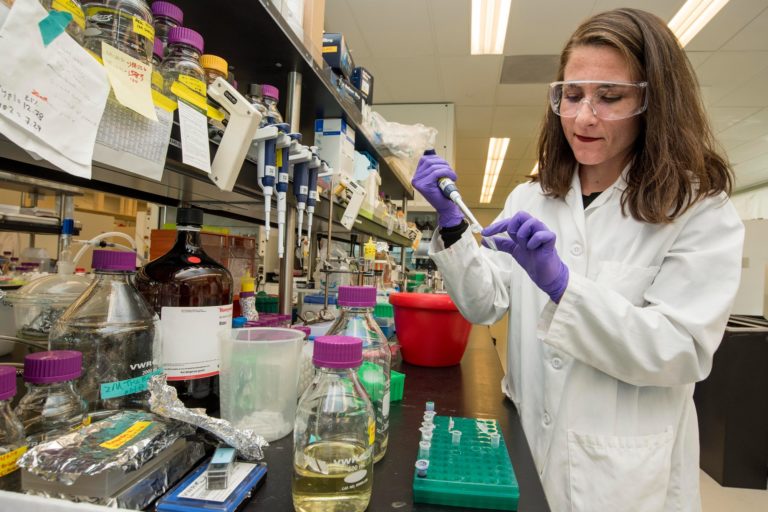Table of Contents
Big data in Pharmaceutical
When pharmaceutical companies collect large amounts of data at different stages of the value chain, from drug discovery to real-time use, they can leverage big data analytics to generate actionable insights for research and development.
Workflow software can provide an efficient and easy-to-use method for automating day-to-day tasks, data, and processes. With advanced analytics, pharmaceutical companies can search huge datasets of drug discovery and data distribution, and vaccine supply chain management to accelerate drug discovery and faster workflows — saving time and money.
Consequently, services and solutions for big data have become an integral part of leading companies.
In a market where most organizational structures are already struggling with the necessary skills and knowledge, big data technology is perceived as a paradigm shift and powerful business weapon for the healthcare and pharmaceutical industries.
These companies can use predictive analytics to analyze large amounts of clinical and molecular data to determine a compound that can be converted to a possible drug based on various parameters such as the chemical structure of the molecule, disease, goals, etc.
Effective use of this data will help pharmaceutical companies better identify new potential drug candidates and convert them into effective, approved, and reimbursable costs more effectively.
Using clinical monitoring programs and detailed data, pharmaceutical companies can understand new trends and patterns that will enable them to develop more targeted drugs for patients.
The power of Big Data
Big data can be a key factor in precision medicine, where a disease is diagnosed and treated using appropriate data on a patient’s genetic makeup, environmental factors, and behaviors. By leveraging big data technologies to filter unstructured genomic data, pharmaceutical companies can define models that can help their patients develop a more effective and personalized drug and receive important data from a variety of sources to help them make key decisions in marketing strategies and sales.
Pharmaceutical companies can use data science and analysis to analyze various data sources, such as publicly available information sources, social media, health databases, drug databases, scientific publications, human genomes, sensor data, etc. Companies can use predictive analytics to analyze large amounts of data. Clinical and molecular data, according to various parameters such as the chemical structure of the molecule, disease, target, etc., determine the compound that can be converted into a possible drug. These data will help pharmaceutical companies better identify potential new drug candidates for drug trials and turn them into effective drugs
Pharma companies can analyze clinical monitoring programs and detailed data to quickly extract relevant information from the available literature to develop more targeted drugs for patients and improve drug discovery and launch. With the help of big data, companies can recruit suitable patients for clinical trials using genetic information, personality traits, and disease status, which in turn increase the effectiveness of the drug.
The research performed using Big Data analytics is done via predictive modeling to analyze toxicity, drug interactions, and inhibition using historical data collected from various sources such as clinical trials, drug trials, and more. This data can then be used to model strategy as the pipeline progresses, which leads to better clinical trials, better risk management for pharmaceutical companies, better patient safety, and closer collaboration between different pharmaceutical organizations.
Data analytics can help improve healthcare for all stakeholders in the industry, from healthcare and medical systems to patients, pharmaceutical and medical device companies, and specialty companies. To harness these key health analytics capabilities you need state-of-the-art software and a robust process that transforms data into actionable, real-world evidence. This data facilitates understanding of complex business processes which in turn leads to better clinical trials, better risk management for pharmaceutical companies, greater patient safety, and closer collaboration among different pharmaceutical companies.
With advanced analytics, pharmaceutical companies can intelligently search large amounts of patent data, clinical trial data, drug distribution, and vaccine supply chain management data sets to speed up drug discovery and workflow. Pharmaceutical companies can use data science and analysis to analyze various data sources, such as public information sources, social media, health databases, drug databases, scientific publications, human genomes, sensor data, etc. Big data can help design matching blockbusters and recruit multiple patients for clinical trials, which in turn increases the likelihood of drug success.
Final Thoughts
According to a survey by GlobalData, a data and analytics firm, healthcare professionals have identified artificial intelligence and big data/analytics as the best technologies that will transform pharmaceutical development and development, marketing, and sales. Whether it’s using Big Data for precision medicine or to reduce drug research failures or lowering research and drug discovery costs, big data analytics has a bright future in the pharmaceutical world.
With this information, companies can make informed decisions during research and development. Leveraging Big Data and machine learning, companies can perform predictive analytics to find patterns in the collected data and to make accurate forecasts of industry trends. Our research shows that pharmaceutical companies can expand the amount of data they collect and improve their approach to managing and analyzing that data from a variety of sources, including the R&D process itself, retailers, patients, and healthcare professionals.
Big data analytics in the pharmaceutical industry can solve this problem by combining genomic sequencing data, patient medical sensor data (a device that can be worn during treatment to track the physical changes of a person), and electronic medical records. This can help scientists and researchers examine patterns in past records and regulate drug reactions, which in turn influence the beneficial process in the pharmaceutical industry.
As a result of Big Data analysis, we now have the ability to process and analyze this information, which opens up huge opportunities for every industry. Over the years, the demand for data has grown exponentially, and now rapid integration is seen as a business need. Although clinical trials can be conducted manually or according to traditional methods, Big Data has completely changed the way clinical trials work in the pharmaceutical industry.
Author Bio:
XcelPros Team
At XcelPros – A Microsoft Dynamics Partner, Our team brings together years of experience and a high level of technical expertise. We strive to generate high-quality, engaging content with up-to-date information from reliable sources.
https://www.facebook.com/XcelPros/
https://twitter.com/Xcelpros
https://www.linkedin.com/company/xcelpros









